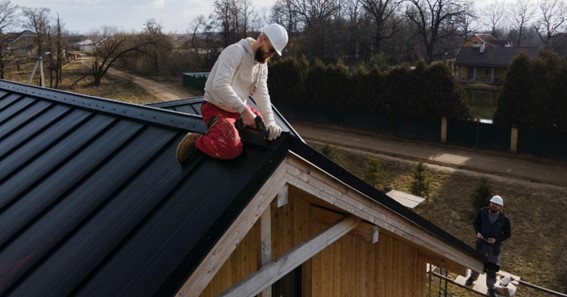A roofing business is very risky, no matter how experienced or careful a roofing contractor is. According to the bureau of labor statistics, the roofing industry records one of the highest total numbers of injuries and deaths. Recent data from LBS reveals an injury and illness rate of 5.6 per 100 workers.
For a place like Nevada, which is a mountainous state, roofing is particularly dangerous because of its extreme weather conditions and high altitude. This underlines the importance of purchasing Nevada roofers insurance to protect you and your businesses in the event of accidents or injuries. More than just protecting your business with a comprehensive insurance policy, it is also important to adhere to recommended risk management practices to help minimize on-site accidents.
How to Prevent On-Site Accidents
Conduct Risk Assessment
A thorough risk assessment is the first step to take before beginning any roofing project. Contractors should conduct a site inspection to identify any potential hazards. Once identified, the likelihood and severity of each hazard and the level of risk associated with them should be evaluated. Based on the outcome of the evaluation, a plan should be developed that outlines the steps that will be taken to mitigate each hazard identified. Should an accident or injury still occur on the job site, there should be an emergency response plan.
Wear Personal Protective Equipment (PPE)
Nevada roof workers should be equipped with personal protective equipment (PPE) to stay safe while working. These pieces of protective equipment include hard hats, safety glasses, gloves, and fall protection harnesses. In the event of any accident, this equipment will help reduce the severity of accidents that do occur.
Regularly Inspect your Worksite
Roofing contractors should be familiar with safety regulations set by OSHA and other regulatory bodies. Moreso, regular inspections of the worksite should be done to ensure workers’ compliance with these safety regulations. It is usually one thing for regulations to be set and another for workers to comply. In compliance with OSHA standards and safety procedures, roofing contractors help reduce the risk of accidents and injuries on the job.
Invest in High-Quality Tools
The use of high-quality tools is an important aspect of minimizing the likelihood of tool failure, which can result in accidents and injuries. When choosing tools for a roofing project, it is important to consider factors like durability, precision, ergonomics, and safety features, as well as the requirements of the project and the workers who will be using the tools. High-quality tools can withstand the stress of a roofing project and help workers complete tasks more accurately and with less effort.
Safety Training
Roofing projects can be dangerous, with workers often working at heights and using heavy machinery and tools. Safety training helps roofing contractors create a safer work environment for everyone involved in a project. It helps workers become more aware of the hazards and risks associated with their job and how to take the necessary steps to avoid accidents and injuries. Workers should also be trained on how to use equipment safely, such as ladders and scaffolding, and how to operate machinery properly.
To conclude, on-site accidents can be traumatic experiences, physically, emotionally, and financially. By following safety precautions and on-site rules, roofing contractors can greatly reduce the chances of accidents.






